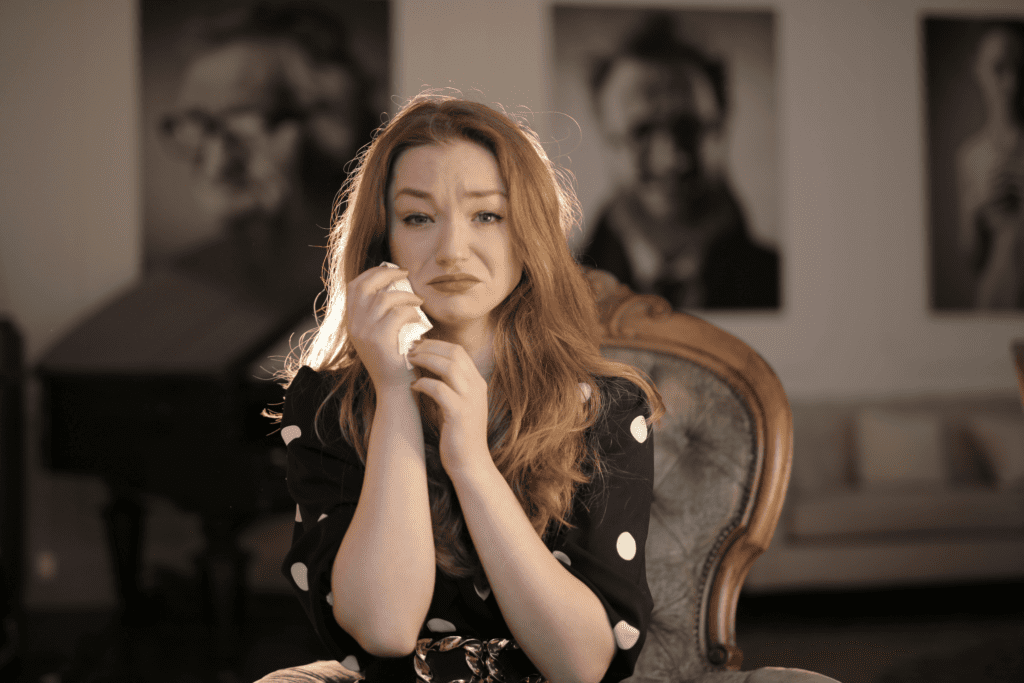Last updated on December 18th, 2024 at 06:24 am
- 1.1 The Spectrum of Mood Disorders
- 1.2 Historical Context
- 2. Symptoms of Bipolar Disorder
- 2.1 Manic Episodes
- 2.2 Hypomanic Episodes
- 2.3 Depressive Episodes in Bipolar Disorder
- 3. Symptoms of Major Depressive Disorder
- 3.1 Core Symptoms
- 3.2 Atypical Features
- 4. Causes and Risk Factors
- 4.1 Genetic Factors
- 4.2 Neurobiological Factors
- 4.3 Environmental and Psychological Factors
- 5. Diagnosis and Differential Diagnosis
- 5.1 Diagnostic Criteria
- 5.2 Challenges in Diagnosis
- 5.3 Diagnostic Tools
- 6. Treatment Approaches
- 6.1 Medication for Bipolar Disorder
- 6.2 Medication for Major Depressive Disorder
- 6.3 Psychotherapy
- 6.4 Other Treatment Modalities
- 7. Prognosis and Long-term Management
- 7.1 Prognosis for Bipolar Disorder
- 7.2 Prognosis for Major Depressive Disorder
- 7.3 Lifestyle Management
- 8. Future Directions in Research and Treatment
- 8.1 Genetic Research
- 8.2 Neuroimaging Studies
- 8.3 Novel Treatment Approaches
- Diagnosing Bipolar Disorder vs. Depression
- Genetic and Environmental Factors
- Cognitive Impairment and Mood Fluctuations
- Comorbidity and Physical Health Concerns
- Mixed Episodes and Rapid Cycling
- Effective Treatment Options
- Health Care Provider Involvement
- Lifestyle Changes for Bipolar and Depression
- Managing Suicidal Ideation and Crisis Intervention
- Types of Depression
- Long-Term Management Strategies
- Physical Health and Depression
- Emerging Treatment Options
- Role of Primary Care in Mental Health
- Coping Strategies and Self-Care Practices
- Frequently Asked Questions
- What Are the Key Differences Between Bipolar Disorder and Depression?
- How Do Manic Episodes in Bipolar Disorder Differ from Depressive Episodes?
- Can Stressful Life Events Trigger Both Bipolar Disorder and Depression?
- What Role Do Genetic Factors Play in Bipolar Disorder and Depression?
- How Are Neurotransmitter Imbalances Involved in These Conditions?
- What Are the Diagnostic Criteria for Bipolar Disorder Compared to Depression?
- How Do Treatment Options Differ Between Bipolar Disorder and Depression?
- Can Lifestyle Changes Aid in Managing Both Conditions?
- Are There Specific Psychotherapies Effective for Both Disorders?
- How Do Sleep Disturbances Manifest Differently in Bipolar Disorder and Depression?
- What Are the Risks of Misdiagnosing Bipolar Disorder as Depression?
- How Do Substance Use Disorders Interact with Bipolar Disorder and Depression?
- Can Anxiety Disorders Co-Exist with Bipolar Disorder and Depression?
- How Do Rapid Cycling Patterns Differ in Bipolar Disorder and Depression?
- What Are the Implications of Mixed Episodes in Bipolar Disorder?
- How Do Environmental Factors Influence the Onset of Bipolar Disorder and Depression?
- Are There Differences in Suicidal Ideation Between Bipolar Disorder and Depression?
Bipolar disorder and major depressive disorder are two distinct mental health conditions that share some overlapping symptoms but have crucial differences in their presentation, diagnosis, and treatment.
While both can significantly impact a person’s mood and daily functioning, understanding the nuances between these disorders is essential for proper diagnosis and effective management.
Bipolar disorder is characterized by alternating periods of extreme mood swings, including manic or hypomanic episodes and depressive episodes. In contrast, major depressive disorder involves persistent feelings of sadness, hopelessness, and loss of interest in previously enjoyable activities, without the presence of manic or hypomanic episodes.
Understand the key highlights of Bipolar Vs. Depression. Explore their unique symptoms, causes, and treatment approaches to find the right support.
1.1 The Spectrum of Mood Disorders
Mood disorders encompass a range of conditions that affect a person’s emotional state. While bipolar disorder and major depression are among the most common, other mood disorders include:
– Persistent depressive disorder (dysthymia)
– Cyclothymic disorder
– Seasonal affective disorder
– Premenstrual dysphoric disorder
Each of these conditions has its own unique set of symptoms and diagnostic criteria, highlighting the complexity of mood disorders and the importance of accurate diagnosis.
1.2 Historical Context
The understanding of bipolar disorder and depression has evolved significantly over time. In ancient times, these conditions were often attributed to supernatural causes or imbalances in bodily fluids. It wasn’t until the late 19th and early 20th centuries that modern psychiatric classifications began to emerge.
Emil Kraepelin, a German psychiatrist, was instrumental in distinguishing between what he termed “manic-depressive insanity” (now known as bipolar disorder) and “dementia praecox” (now known as schizophrenia). This laid the groundwork for our current understanding of mood disorders as distinct clinical entities.


2. Symptoms of Bipolar Disorder
Bipolar disorder is characterized by alternating episodes of mania or hypomania and depression. The severity and duration of these episodes can vary greatly between individuals and even within the same person over time.
2.1 Manic Episodes
Manic episodes are periods of abnormally elevated mood and energy levels. Symptoms may include:
– Inflated self-esteem or grandiosity
– Decreased need for sleep
– Increased talkativeness or pressured speech
– Racing thoughts or flight of ideas
– Distractibility
– Increased goal-directed activity or psychomotor agitation
– Excessive involvement in risky or pleasurable activities
2.2 Hypomanic Episodes
Hypomanic episodes are similar to manic episodes but less severe. They do not cause significant impairment in social or occupational functioning and do not require hospitalization. Symptoms are similar to those of manic episodes but are less intense.
2.3 Depressive Episodes in Bipolar Disorder
Depressive episodes in bipolar disorder share many similarities with major depressive disorder. Symptoms may include:
– Persistent sad, anxious, or empty mood
– Loss of interest or pleasure in activities
– Significant weight loss or gain
– Insomnia or hypersomnia
– Psychomotor agitation or retardation
– Fatigue or loss of energy
– Feelings of worthlessness or excessive guilt
– Difficulty concentrating or making decisions
– Recurrent thoughts of death or suicide
3. Symptoms of Major Depressive Disorder
Major depressive disorder is characterized by persistent feelings of sadness, hopelessness, and loss of interest in previously enjoyable activities. Unlike bipolar disorder, there are no manic or hypomanic episodes.
3.1 Core Symptoms
The core symptoms of major depressive disorder include:
– Depressed mood most of the day, nearly every day
– Markedly diminished interest or pleasure in almost all activities
– Significant weight loss or gain, or changes in appetite
– Sleep disturbances (insomnia or hypersomnia)
– Psychomotor agitation or retardation
– Fatigue or loss of energy
– Feelings of worthlessness or excessive guilt
– Diminished ability to think or concentrate
– Recurrent thoughts of death or suicide
3.2 Atypical Features
Some individuals with major depressive disorder may experience atypical features, which can include:
– Mood reactivity (mood brightens in response to positive events)
– Increased appetite or weight gain
– Hypersomnia (excessive sleeping)
– Leaden paralysis (heavy feeling in arms or legs)
– Long-standing pattern of interpersonal rejection sensitivity


4. Causes and Risk Factors
The exact causes of bipolar disorder and major depressive disorder are not fully understood. However, research suggests that a combination of genetic, biological, environmental, and psychological factors contribute to the development of these conditions.
4.1 Genetic Factors
Both bipolar disorder and major depression tend to run in families, suggesting a genetic component. However, having a family history of these disorders does not guarantee that an individual will develop them.
4.2 Neurobiological Factors
Imbalances in neurotransmitters, such as serotonin, norepinephrine, and dopamine, are thought to play a role in both disorders. Additionally, structural and functional brain abnormalities have been observed in individuals with these conditions.
4.3 Environmental and Psychological Factors
Stressful life events, trauma, and chronic stress can trigger or exacerbate symptoms of both bipolar disorder and major depression. Other risk factors may include:
– Childhood abuse or neglect
– Substance abuse
– Certain medical conditions
– Certain medications
– Seasonal changes (particularly for seasonal affective disorder)
5. Diagnosis and Differential Diagnosis
Accurate diagnosis of bipolar disorder and major depressive disorder is crucial for appropriate treatment. However, distinguishing between these conditions can be challenging, particularly when a person with bipolar disorder presents during a depressive episode.
5.1 Diagnostic Criteria
Diagnosis is typically based on the criteria outlined in the Diagnostic and Statistical Manual of Mental Disorders (DSM-5). For bipolar disorder, a history of at least one manic or hypomanic episode is required. For major depressive disorder, symptoms must be present for at least two weeks and represent a change from previous functioning.


5.2 Challenges in Diagnosis
Misdiagnosis is common, particularly in cases of bipolar II disorder, where hypomanic episodes may be less obvious or may be perceived as periods of high productivity rather than symptoms of illness. Additionally, individuals with bipolar disorder may be more likely to seek help during depressive episodes, leading to an initial misdiagnosis of major depressive disorder.
5.3 Diagnostic Tools
In addition to clinical interviews, various screening tools and questionnaires can aid in diagnosis, such as:
– Mood Disorder Questionnaire (MDQ)
– Bipolar Spectrum Diagnostic Scale (BSDS)
– Patient Health Questionnaire-9 (PHQ-9)
– Hamilton Depression Rating Scale (HAM-D)
6. Treatment Approaches
Treatment for bipolar disorder and major depressive disorder typically involves a combination of medication and psychotherapy. However, the specific approaches differ between the two conditions.
6.1 Medication for Bipolar Disorder
Mood stabilizers are the cornerstone of pharmacological treatment for bipolar disorder. Common medications include:
– Lithium
– Valproic acid
– Carbamazepine
– Lamotrigine
Atypical antipsychotics may also be used, particularly for manic episodes. Antidepressants are sometimes prescribed but must be used cautiously due to the risk of triggering manic episodes.
6.2 Medication for Major Depressive Disorder
Antidepressants are the primary pharmacological treatment for major depressive disorder. Common classes include:
– Selective serotonin reuptake inhibitors (SSRIs)
– Serotonin-norepinephrine reuptake inhibitors (SNRIs)
– Atypical antidepressants
– Tricyclic antidepressants (less commonly used due to side effects)
6.3 Psychotherapy
Various forms of psychotherapy can be beneficial for both bipolar disorder and major depression:
– Cognitive-behavioral therapy (CBT)
– Interpersonal therapy
– Dialectical behavior therapy (DBT)
– Family-focused therapy (particularly for bipolar disorder)


6.4 Other Treatment Modalities
In some cases, additional treatments may be recommended:
– Electroconvulsive therapy (ECT)
– Transcranial magnetic stimulation (TMS)
– Light therapy (for seasonal affective disorder)
– Mindfulness-based interventions
7. Prognosis and Long-term Management
Both bipolar disorder and major depressive disorder are chronic conditions that require ongoing management. However, with proper treatment, many individuals can achieve significant symptom relief and improved quality of life.
7.1 Prognosis for Bipolar Disorder
The course of bipolar disorder can vary widely between individuals. Some may experience frequent mood episodes, while others may have long periods of stability between episodes. Early diagnosis and consistent treatment can improve long-term outcomes.
7.2 Prognosis for Major Depressive Disorder
Many individuals with major depressive disorder respond well to treatment, with some achieving full remission. However, recurrence is common, and ongoing maintenance treatment may be necessary to prevent relapse.
7.3 Lifestyle Management
In addition to medication and therapy, lifestyle factors play a crucial role in managing both conditions:
– Maintaining a regular sleep schedule
– Engaging in regular physical exercise
– Practicing stress-reduction techniques
– Avoiding alcohol and illicit drugs
– Building a strong support network
8. Future Directions in Research and Treatment
Ongoing research continues to enhance our understanding of bipolar disorder and major depression, paving the way for improved diagnostic methods and more targeted treatments.
8.1 Genetic Research
Advances in genetic research may lead to a better understanding of the hereditary components of these disorders and potentially enable more personalized treatment approaches.


8.2 Neuroimaging Studies
Brain imaging studies are providing new insights into the structural and functional brain changes associated with mood disorders, which may lead to new therapeutic targets.
8.3 Novel Treatment Approaches
Emerging treatments, such as ketamine for treatment-resistant depression and novel psychotherapeutic approaches, offer hope for individuals who do not respond to traditional treatments.
In conclusion, while bipolar disorder and major depressive disorder share some similarities, they are distinct conditions with unique features, treatment approaches, and management strategies. Accurate diagnosis and comprehensive, individualized treatment plans are essential for improving outcomes and quality of life for individuals living with these challenging conditions.
Diagnosing Bipolar Disorder vs. Depression
Accurately diagnosing bipolar disorder vs depression differences is complex. Bipolar disorder experience includes manic episodes, hypomanic symptoms, and mixed episodes, whereas major depressive disorder lacks these. Diagnosis typically involves a detailed medical history, physical exam, and assessment by a mental health professional. This helps to identify bipolar disorder symptoms, depressive symptoms, and any comorbid anxiety disorder.
Blood tests are sometimes utilized to rule out other underlying health conditions, such as thyroid problems or type of diabetes, which can mimic symptoms of depression. In complex cases, additional imaging may be used to understand brain chemistry and bipolar disorder or depression.
Genetic and Environmental Factors
Genetic factors in bipolar disorder and depression play a significant role, as both conditions often run in families. Family history of bipolar disorder or depression can increase the likelihood of developing these mood disorders. Environmental factors in bipolar disorder and depression, such as stressful life events or trauma, also contribute to the onset of these conditions. Negative life events, such as loss of a loved one or chronic stress, can trigger episodes of depression or even mixed episodes in those predisposed to bipolar illness.
Research, such as that found in the Archives of General Psychiatry, continues to investigate the combination of genetic and environmental triggers in these mood disorders.
Cognitive Impairment and Mood Fluctuations
Cognitive impairment is often a significant aspect of both bipolar disorder and clinical depression. During depressive episodes or phases of bipolar depression, individuals may experience difficulty concentrating or negative cognitions that interfere with daily functioning. Mood stabilizers and cognitive behavioral therapy are common treatments to address these symptoms.
Emotional highs and lows in bipolar disorder are more extreme compared to the persistent low mood in unipolar depression. These fluctuations can significantly impact daily life and lead to anxiety disorder or increased risk of suicide.


Comorbidity and Physical Health Concerns
Comorbidity with substance use disorders and anxiety disorders is common in individuals with bipolar disorder and depression. Substance abuse and depression often go hand in hand, as individuals may use alcohol or drugs to self-medicate. Similarly, substance abuse and bipolar disorder can exacerbate symptoms and lead to more severe forms of the illness.
Both conditions can increase the risk of other physical health issues, such as heart disease or type of diabetes. Chronic health conditions like chronic inflammation and acute inflammation are also linked to both bipolar disorder and major depressive disorder, often worsening overall prognosis. The National Institute of Mental Health highlights the importance of early intervention to reduce these risks.
Mixed Episodes and Rapid Cycling
Mixed episodes in bipolar disorder involve simultaneous depressive symptoms and manic symptoms. This combination presents a unique challenge in treatment as the individual can experience hypomanic symptoms alongside intense sadness or anxiety. Rapid cycling in bipolar disorder, characterized by four or more mood episodes within a year, can make stabilization difficult and requires careful management by a mental health specialist.
Effective Treatment Options
An effective treatment plan for bipolar disorder often involves mood stabilizers such as lithium, while antidepressants are typically used for treatment for depression. A combination of psychotherapy for bipolar disorder and psychotherapy for depression, such as cognitive behavioral therapy and interpersonal therapy, can be effective in managing symptoms and improving coping skills.
Recent studies in the Journal of Affective Disorders have emphasized the value of personalized medicine in mental health, indicating that a tailored approach to medication and therapy can enhance treatment outcomes.
Health Care Provider Involvement
Primary care providers and mental health professionals work together to manage these conditions effectively. A mental health specialist can provide a detailed assessment, while primary care can help monitor physical health, such as blood pressure and blood sugar levels. This collaborative approach ensures that both the bipolar disorder symptoms and the physical complications are well managed.
According to the American Psychiatric Association, engaging with a health care provider regularly is key to managing both bipolar and unipolar disorder effectively. Consistent follow-ups help in monitoring treatment progress and making necessary adjustments.
Lifestyle Changes for Bipolar and Depression
Lifestyle changes for bipolar disorder and depression can significantly improve outcomes. Strategies such as maintaining a regular activity level, practicing sleep hygiene, and avoiding triggers like substance abuse can prevent mood swings and depressive episodes. Engaging in pleasurable activities and adhering to structured routines may also mitigate the impact of mood disorders on daily life.
The British Journal of Psychiatry highlights the importance of stress management techniques and exercise and mental health as effective non-pharmaceutical interventions that can alleviate symptoms and improve overall well-being.
Managing Suicidal Ideation and Crisis Intervention
Suicidal ideation is a severe symptom in both bipolar and depressive illnesses. Individuals experiencing a severe depression episode or intense manic symptoms should seek immediate help from mental health services administration or contact crisis hotlines. Emergency mental health care options, such as hospitalization or crisis intervention services, may be necessary to ensure the safety of those at risk.
The American Journal of Psychiatry emphasizes that recognizing early warning signs of suicidal thoughts in depression and bipolar disorder is crucial for prevention and timely intervention.


Types of Depression
There are several types of depression that individuals can experience, each with distinct characteristics. Unipolar depression refers to major depressive disorder, where mood swings are absent. Bipolar depression involves depressive episodes occurring in individuals with bipolar disorder.
Situational depression is triggered by specific negative life events, whereas postpartum depression affects individuals after childbirth. Seasonal affective disorder is linked to seasonal changes, typically worsening in winter months.
The Psychiatry Research journal provides more insights into the different types of depression and their specific triggers.
Long-Term Management Strategies
Long-term management of bipolar disorder and depression involves a combination of therapies, medication, and lifestyle adjustments. Psychological treatments such as cognitive behavioral therapy are essential to help individuals understand and modify negative cognitions. Consistent follow-ups with a mental health professional can also reduce the risk of relapse.
According to the American Journal of Psychiatry, individuals with bipolar disorder experience improved outcomes with structured support systems. Support groups for bipolar disorder and support groups for depression can also provide community and emotional support during treatment.
Physical Health and Depression
Physical health can significantly influence depression symptoms. Blood sugar levels, blood pressure, and activity level are crucial indicators to monitor, as imbalances can exacerbate both bipolar disorder symptoms and symptoms of depression. Primary care and mental health professionals often collaborate to manage these physical health components.
Increased focus on physical health, including regular exercise and mental health practices, has been shown in the Acta Psychiatrica Scandinavica to reduce depressive symptoms and improve overall quality of life.
Emerging Treatment Options
Emerging treatment options are offering hope to those resistant to conventional treatments. Electroconvulsive therapy is effective for severe symptoms, while transcranial magnetic stimulation and ketamine therapy are being explored as alternatives for treatment for depression and bipolar depression.
Teletherapy options and online support communities have also increased accessibility to care, especially for individuals in remote areas. Mental health resources, including crisis intervention services and mental health hotlines, are crucial elements in providing immediate support.
Role of Primary Care in Mental Health
Primary care providers play a pivotal role in managing mood disorders by addressing both mental and physical health concerns. Routine screenings for episodes of depression and manic symptoms are critical in early intervention. Primary care involvement helps bridge the gap between mental health services and general healthcare.
The American Psychiatric Association recommends regular physical exams to monitor for conditions like heart disease and type of diabetes that could complicate mental health treatment.
Coping Strategies and Self-Care Practices
Effective coping strategies are vital for managing daily challenges associated with bipolar and unipolar disorder. Techniques such as journaling for mental health, yoga for mental health, and art therapy have been shown to reduce stress and provide emotional release. Self-care practices like relaxation exercises and mindfulness techniques also aid in reducing anxiety disorder symptoms.
The British Journal of Psychiatry emphasizes that mental health education and awareness campaigns are essential in breaking the stigma and encouraging individuals to seek professional help when needed.
From Embrace Inner Chaos to your inbox
Transform your Chaos into authentic personal growth – sign up for our free weekly newsletter! Stay informed on the latest research advancements covering:
Narcissistic Personality Disorder (NPD)
Frequently Asked Questions
What Are the Key Differences Between Bipolar Disorder and Depression?
Bipolar disorder is characterized by mood swings that include emotional highs (mania or hypomania) and lows (depression). In contrast, depression, or major depressive disorder, involves persistent feelings of sadness and loss of interest without the manic phases. Recognizing these patterns is essential for proper diagnosis and treatment (Mayo Clinic).
How Do Manic Episodes in Bipolar Disorder Differ from Depressive Episodes?
Manic episodes involve elevated mood, increased energy, and often risky behaviors, whereas depressive episodes are marked by sadness, fatigue, and loss of interest. These contrasting states define bipolar disorder, distinguishing it from unipolar depression, which lacks manic phases (WebMD).


Can Stressful Life Events Trigger Both Bipolar Disorder and Depression?
Yes, stressful life events can trigger episodes in both conditions. However, individuals with bipolar disorder may experience more pronounced mood swings in response to stress compared to those with depression. Managing stress is vital in both cases to prevent symptom exacerbation (Medical News Today).
What Role Do Genetic Factors Play in Bipolar Disorder and Depression?
Both conditions have genetic components. A family history of bipolar disorder or depression increases the likelihood of developing the respective condition, indicating a hereditary predisposition. Genetic research continues to explore these links to improve understanding and treatment (National Institute of Mental Health).
How Are Neurotransmitter Imbalances Involved in These Conditions?
Imbalances in neurotransmitters like serotonin and norepinephrine are implicated in both disorders. In depression, low serotonin levels are common, while bipolar disorder may involve fluctuations in these chemicals, contributing to mood swings. Treatment often targets these imbalances to stabilize mood (Healthline).
What Are the Diagnostic Criteria for Bipolar Disorder Compared to Depression?
Diagnosing bipolar disorder requires evidence of at least one manic or hypomanic episode, in addition to depressive episodes. Depression diagnosis focuses on persistent depressive symptoms without manic phases. Accurate diagnosis is crucial for effective treatment planning (Mayo Clinic).
How Do Treatment Options Differ Between Bipolar Disorder and Depression?
Treatment for depression often includes antidepressants and psychotherapy. In contrast, bipolar disorder treatment typically involves mood stabilizers, antipsychotic medications, and psychotherapy. Using antidepressants alone in bipolar disorder can trigger manic episodes, so careful management is essential (Mayo Clinic).
Can Lifestyle Changes Aid in Managing Both Conditions?
Yes, lifestyle changes such as regular exercise, healthy diet, adequate sleep, and stress management can benefit individuals with both conditions. These practices support overall well-being and can complement medical treatments (Cleveland Clinic).
Are There Specific Psychotherapies Effective for Both Disorders?
Cognitive-behavioral therapy (CBT) is effective for both conditions, helping individuals manage negative thought patterns and behaviors. Other therapies, like interpersonal therapy and family-focused therapy, can also be beneficial, depending on individual needs (Healthline).
How Do Sleep Disturbances Manifest Differently in Bipolar Disorder and Depression?
In depression, individuals may experience insomnia or excessive sleeping. In bipolar disorder, sleep patterns can vary; during manic episodes, individuals often need less sleep, while depressive episodes may involve hypersomnia or insomnia. Monitoring sleep is important in both conditions (Mayo Clinic).
What Are the Risks of Misdiagnosing Bipolar Disorder as Depression?
Misdiagnosing bipolar disorder as depression can lead to inappropriate treatment, such as prescribing antidepressants without mood stabilizers, potentially triggering manic episodes. Accurate diagnosis ensures appropriate treatment and better management of symptoms (WebMD).
How Do Substance Use Disorders Interact with Bipolar Disorder and Depression?
Substance use disorders commonly co-occur with both conditions, often as individuals attempt to self-medicate. This can complicate treatment and worsen symptoms. Integrated treatment approaches addressing both mental health and substance use are essential (National Institute of Mental Health).
Can Anxiety Disorders Co-Exist with Bipolar Disorder and Depression?
Yes, anxiety disorders frequently co-occur with both conditions, exacerbating symptoms and complicating treatment. Comprehensive treatment plans should address all co-existing conditions for effective management (Healthline).
How Do Rapid Cycling Patterns Differ in Bipolar Disorder and Depression?
Rapid cycling refers to experiencing four or more mood episodes within a year and occurs exclusively in bipolar disorder. Depression does not involve manic or hypomanic episodes, so rapid cycling is not applicable. Recognizing rapid cycling is important for treatment adjustments (National Institute of Mental Health).
What Are the Implications of Mixed Episodes in Bipolar Disorder?
Mixed episodes involve simultaneous symptoms of mania and depression, leading to significant distress and functional impairment. These episodes are challenging to treat and require specialized management strategies to stabilize mood effectively (Mayo Clinic).
How Do Environmental Factors Influence the Onset of Bipolar Disorder and Depression?
Environmental factors, such as trauma, stress, and significant life changes, can trigger the onset or exacerbation of both conditions. While genetics play a role, environmental influences are significant in the development and course of these disorders (Medical News Today).
Are There Differences in Suicidal Ideation Between Bipolar Disorder and Depression?
Both conditions carry a risk of suicidal ideation. However, individuals with bipolar disorder, particularly those experiencing mixed or depressive episodes, may face a higher risk. Addressing these risks within treatment is essential for both safety and recovery (WebMD).




